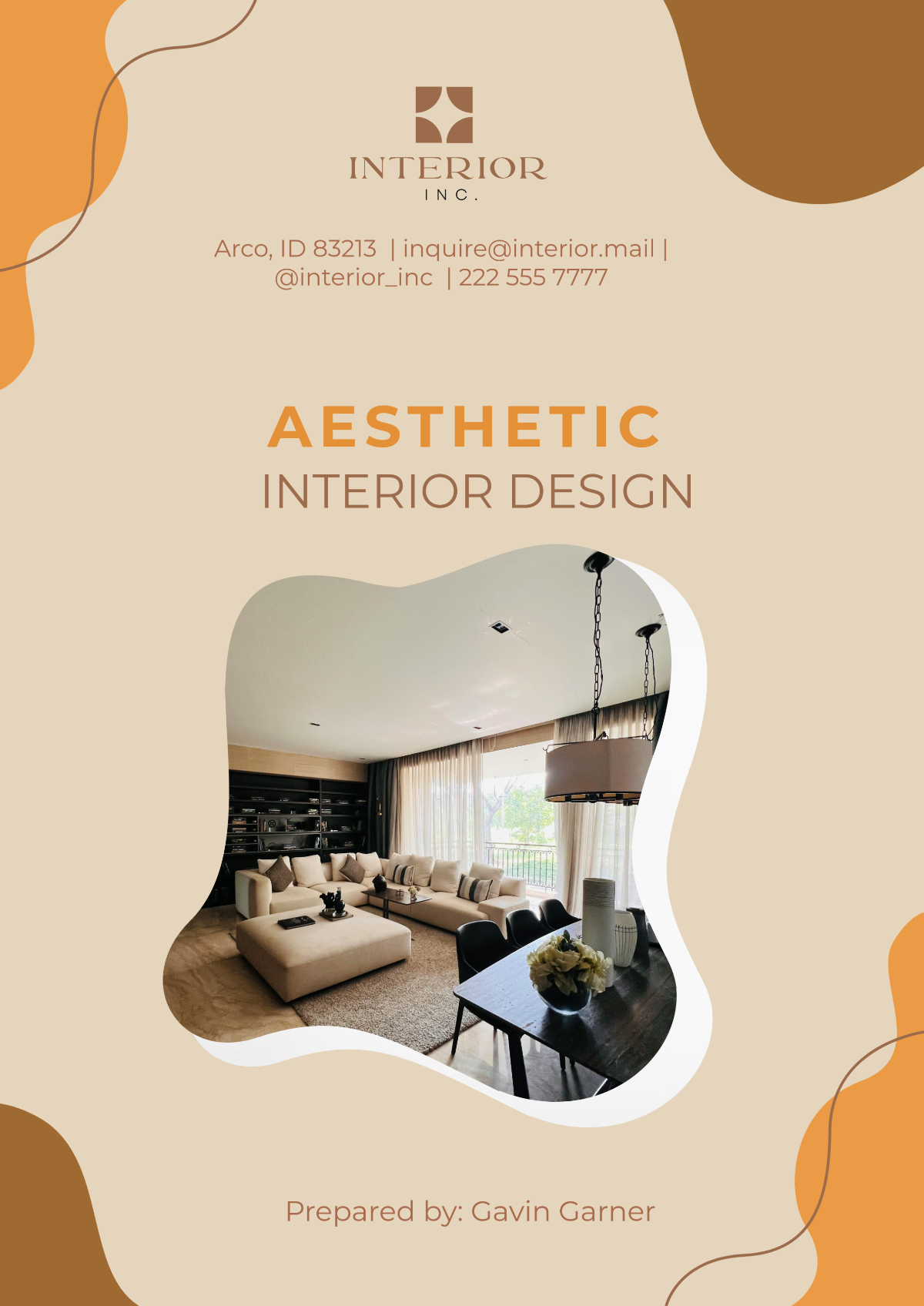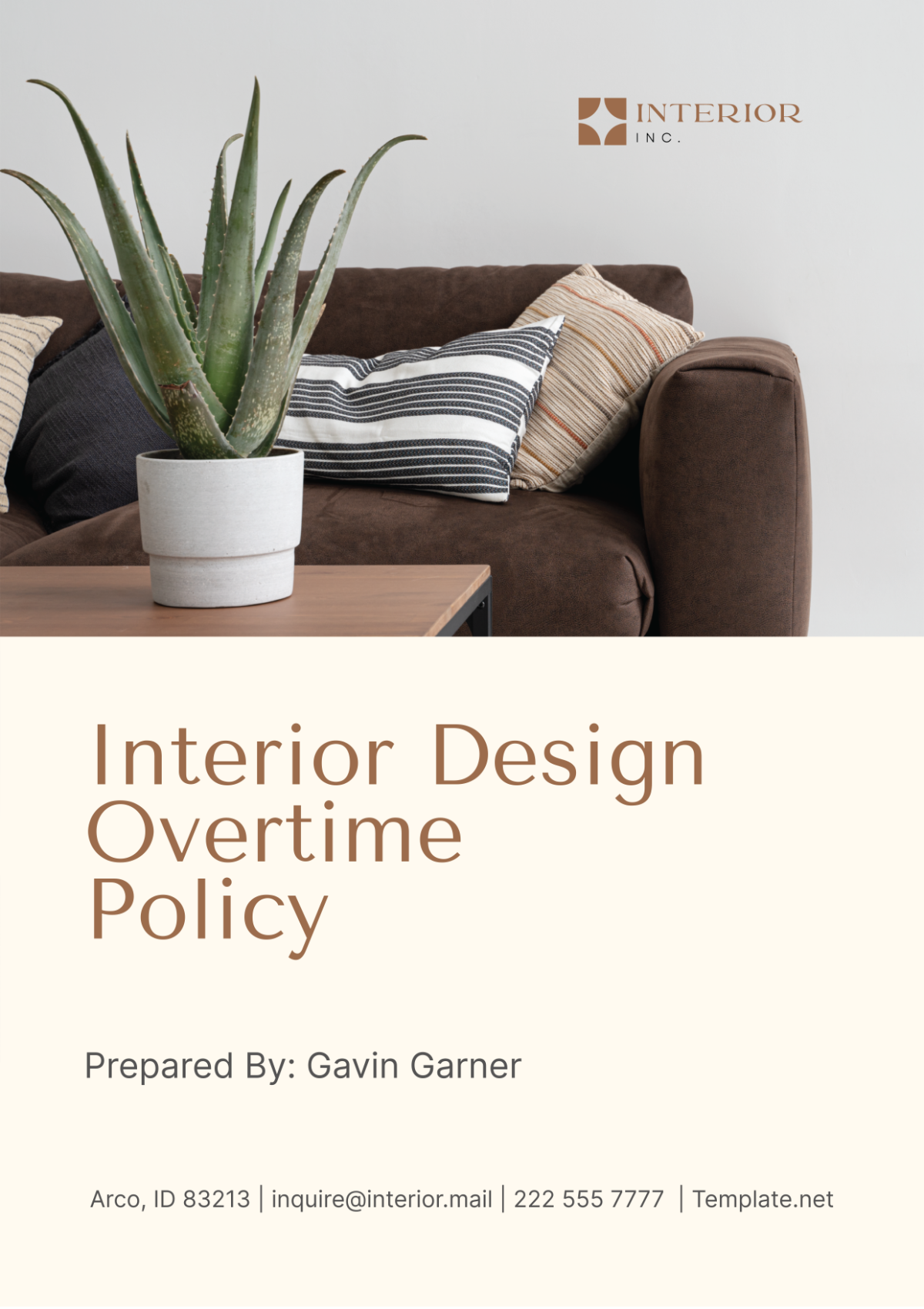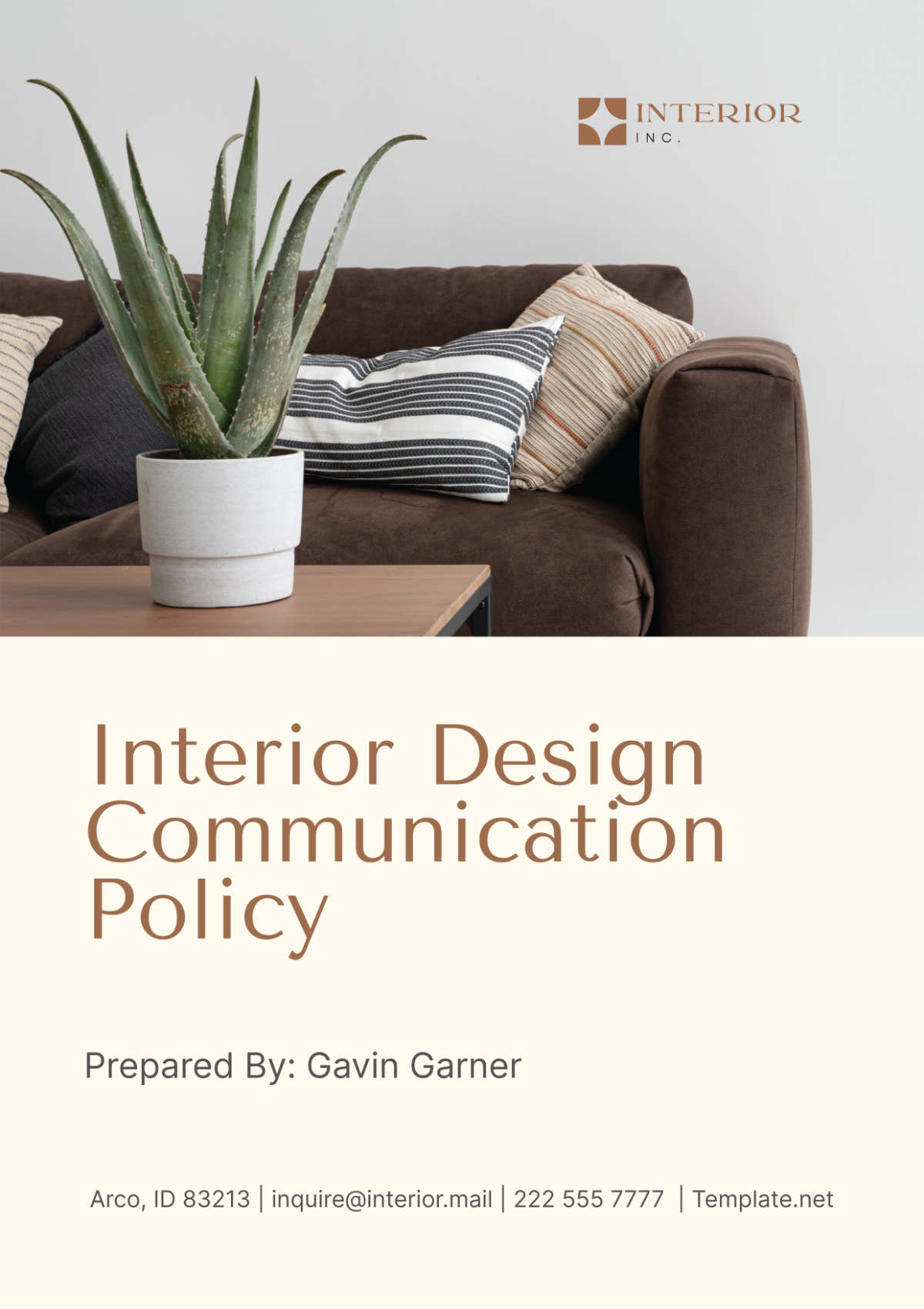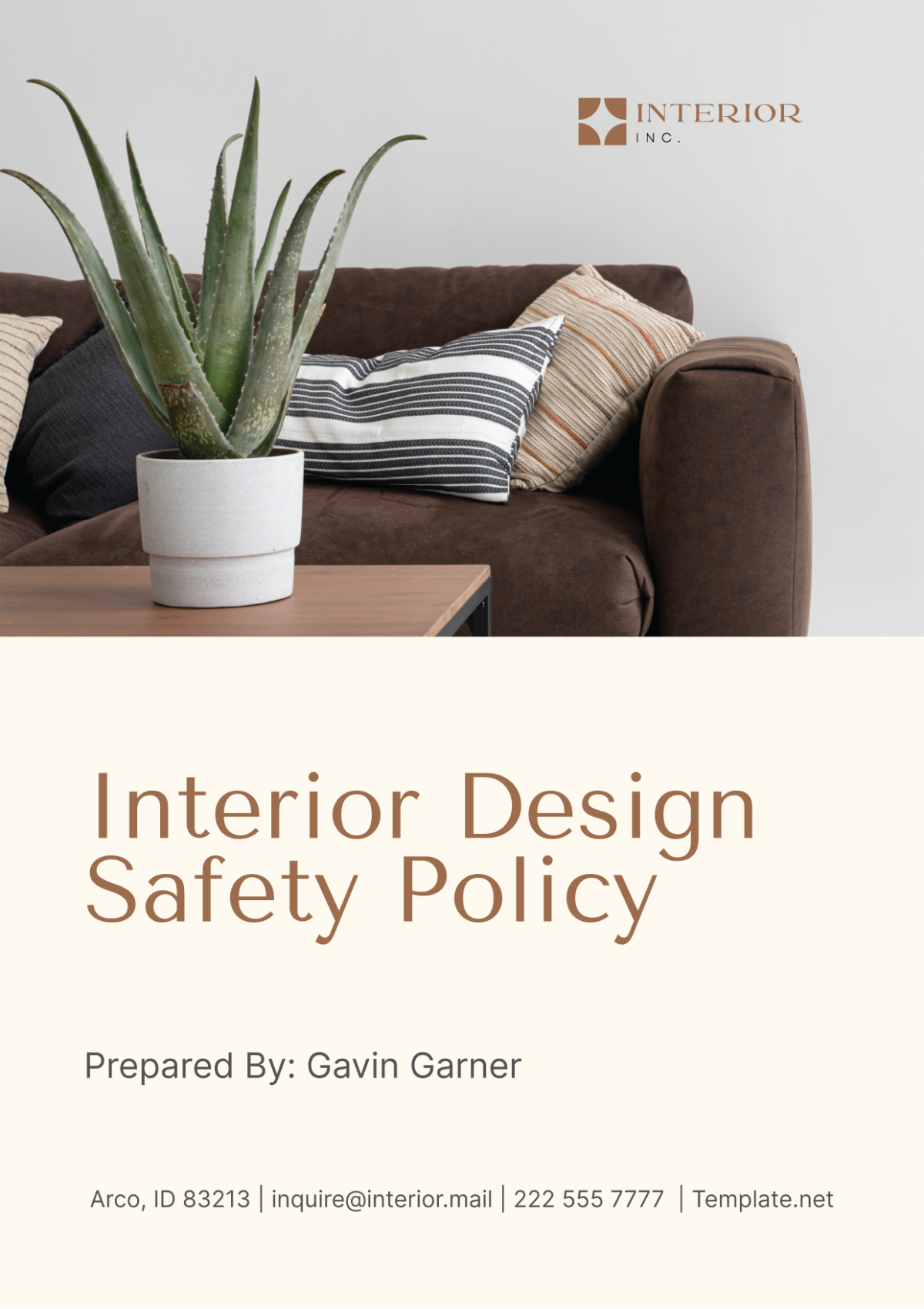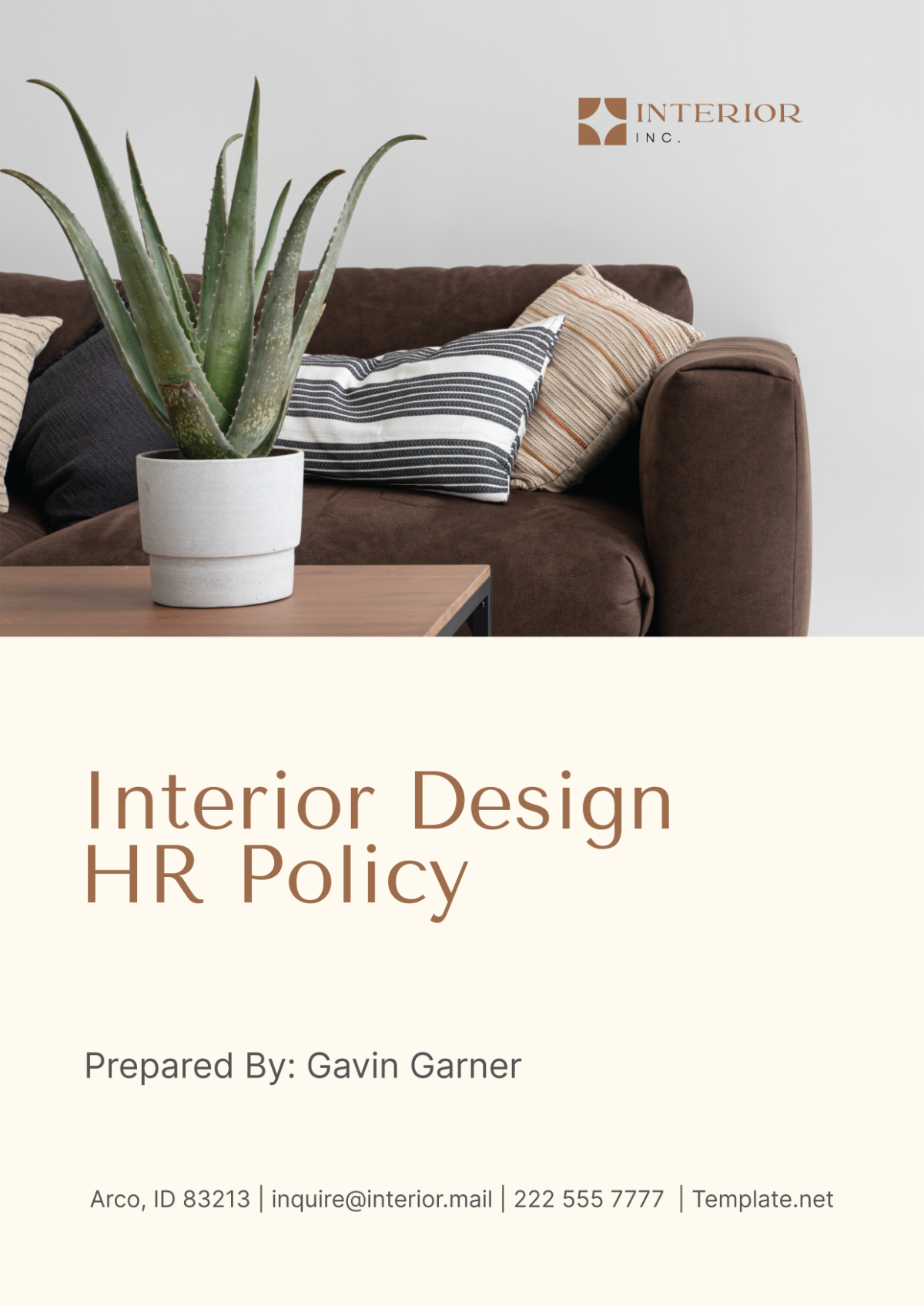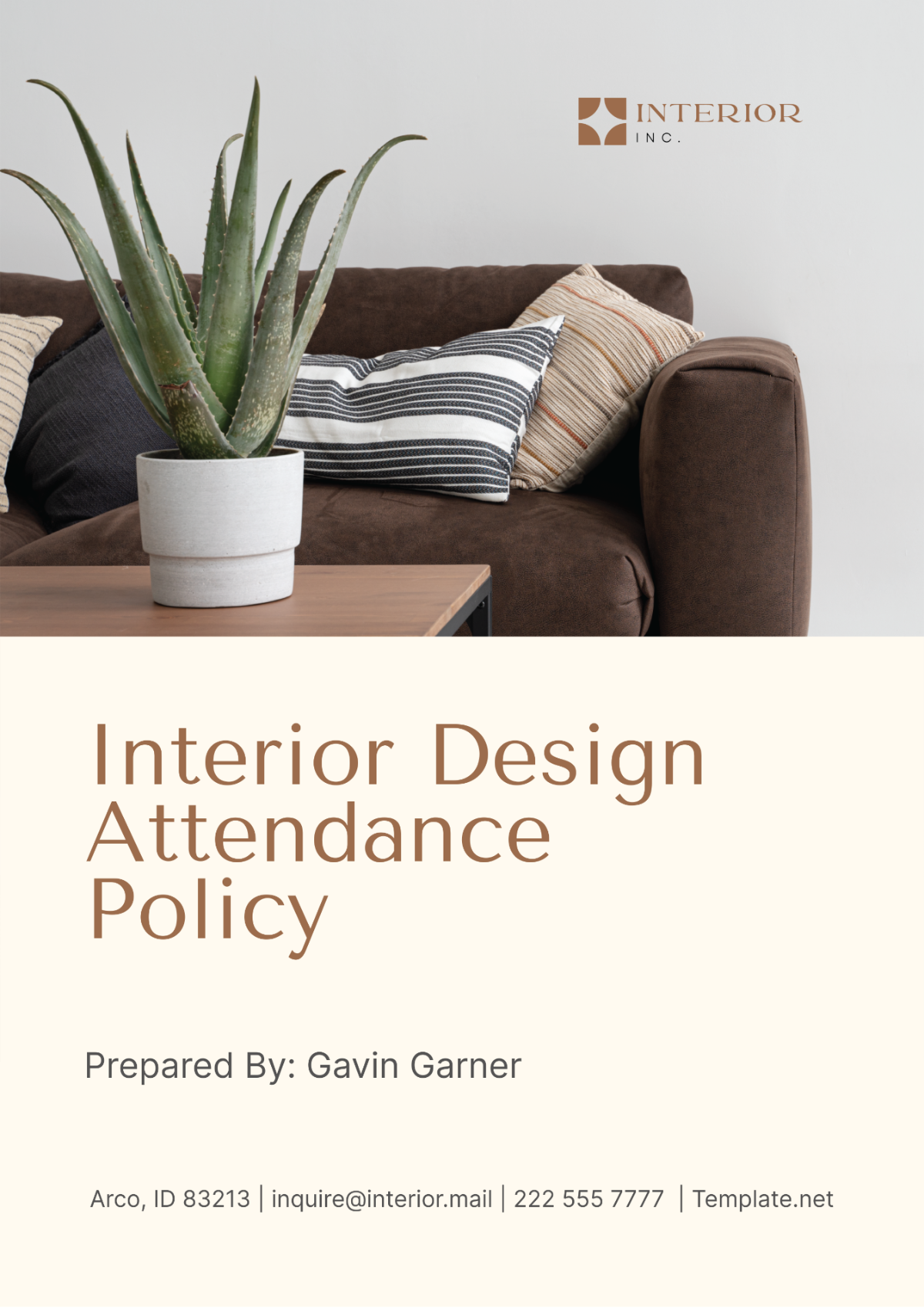I. Introduction
At [Your Company Name], we prioritize delivering exceptional interior design solutions to our clients. This Procedure Policy is established to ensure that our design processes are carried out consistently, efficiently, and in accordance with industry standards. It is imperative that all employees familiarize themselves with this policy to maintain uniformity and uphold our commitment to excellence in every project we undertake.
II. Design Process
A. Client Consultation
Initiation: Upon receiving a client inquiry, the assigned designer promptly contacts the client to schedule an initial consultation meeting. This meeting serves as an opportunity to establish rapport, understand the client's vision, and gather essential project details.
Needs Assessment: During the consultation, the designer conducts a comprehensive needs assessment to determine the client's functional requirements, aesthetic preferences, budgetary constraints, and project timeline. Detailed notes are taken to ensure accurate documentation of client expectations.
Site Visit: If deemed necessary, a site visit is arranged to evaluate the existing space, assess any structural constraints, and gather additional information that may influence the design process.
Proposal Presentation: Following the consultation and site visit, the designer prepares a detailed proposal encompassing design concepts, scope of work, proposed timeline, and estimated costs. The proposal is presented to the client for review and discussion, allowing for open dialogue and adjustments as needed.
Revision and Approval: Upon receiving feedback from the client, the designer revises the proposal accordingly, incorporating any requested modifications or refinements. Final approval from the client is sought before proceeding to the next phase of the design process.
B. Concept Development
Research: Extensive research is conducted by the designer to explore relevant design trends, innovative materials, and creative concepts that align with the client's vision and project objectives. This research phase informs the development of unique design solutions tailored to each client's specific needs.
Sketching and Rendering: Using both traditional sketching techniques and digital rendering tools, the designer translates conceptual ideas into visual representations. These sketches and renderings serve as effective communication tools for conveying design concepts to the client in a clear and compelling manner.
Presentation: The designer presents the initial design concepts to the client, accompanied by explanations of the underlying design principles, material selections, and proposed spatial layouts. This collaborative presentation encourages client engagement and facilitates constructive feedback for further refinement.
Feedback and Refinement: Client feedback is solicited and carefully considered to refine the design concepts iteratively. Through open dialogue and active listening, the designer collaborates with the client to address any concerns, preferences, or suggestions, ensuring that the final design reflects the client's vision and exceeds their expectations.
C. Design Implementation
Material Selection: With the approved design concept as a guide, the designer curates a selection of materials, finishes, furnishings, and accessories that harmonize with the overall design aesthetic. Attention is given to quality, durability, sustainability, and budget considerations when sourcing materials from reputable suppliers and vendors.
Procurement: Once the material selections are finalized, the designer coordinates the procurement process, placing orders for furniture, fixtures, equipment, and any custom-made items required for the project. Close attention is paid to lead times, availability, and budgetary constraints to ensure timely delivery and cost-effective solutions.
Construction and Installation: If construction or renovation work is necessary, the designer collaborates with trusted contractors and craftsmen to execute the project with precision and attention to detail. Throughout the construction phase, the designer provides onsite supervision, conducts regular site inspections, and coordinates with subcontractors to ensure adherence to the approved design specifications and project timeline.
Final Inspection: Upon completion of construction and installation, a comprehensive final inspection is conducted to verify that all design elements have been implemented according to specifications, quality standards, and client expectations. Any deficiencies or discrepancies are addressed promptly to ensure the successful completion and handover of the project.
III. Project Management
A. Project Scheduling
Timeline Development: A detailed project timeline is developed in collaboration with the client, outlining key milestones, deliverables, and deadlines for each phase of the project. The timeline is carefully reviewed and adjusted as needed to accommodate changes in scope, resource availability, or external factors that may impact project progress.
Resource Allocation: Resources, including personnel, materials, equipment, and subcontractors, are allocated strategically to optimize project efficiency and productivity. Clear roles and responsibilities are assigned to team members to ensure accountability and effective coordination throughout the project lifecycle.
Monitoring and Adjustments: Progress is monitored closely using project management tools and techniques to track task completion, identify potential bottlenecks, and mitigate risks proactively. Regular status meetings are held to review project milestones, address any challenges or issues that arise, and make necessary adjustments to the project schedule or resource allocation to keep the project on track.
B. Communication
Client Communication: Open and transparent communication with the client is maintained throughout the project, providing regular updates, seeking feedback, and addressing any concerns or questions promptly. Client preferences, decisions, and approvals are documented systematically to ensure alignment with project objectives and avoid misunderstandings.
Internal Communication: Effective communication among project team members, including designers, project managers, contractors, and administrative staff, is facilitated through regular meetings, email correspondence, and collaboration tools. Clear channels of communication are established to foster teamwork, share information, and resolve any conflicts or issues that may arise during the project lifecycle.
C. Budget Management
Budget Development: A detailed project budget is developed based on the scope of work, design requirements, material selections, labor costs, and other project expenses. The budget is reviewed and approved by the client before commencement of the project to ensure transparency and alignment with their financial expectations.
Expense Tracking: Throughout the project, expenditures are monitored closely to track actual costs against the approved budget. Accurate records of all project-related expenses, including purchases, invoices, and payments, are maintained to facilitate financial reporting, analysis, and reconciliation.
Cost Control Measures: Cost-saving measures and value engineering techniques are implemented proactively to optimize project costs without compromising quality, functionality, or design integrity. Alternative material options, sourcing strategies, and procurement methods are explored to identify opportunities for cost efficiencies and maximize the client's return on investment.
IV. Quality Assurance
A. Quality Standards
Compliance: All design work, construction activities, and installation processes must comply with relevant industry standards, building codes, regulations, and best practices. Designers and contractors are expected to stay informed about evolving regulations and incorporate necessary updates or modifications to ensure compliance throughout the project lifecycle.
Quality Control Checks: Rigorous quality control checks are conducted at various stages of the project, including design development, material procurement, construction progress, and final installation. Designers and project managers perform detailed inspections, review workmanship, and verify compliance with approved design specifications to maintain consistency and uphold quality standards.
Client Satisfaction: Client satisfaction is paramount in every project we undertake. Regular communication, proactive problem-solving, and responsive customer service are essential to address any concerns or issues raised by the client promptly. Feedback from clients is solicited and valued to continuously improve our processes, enhance service delivery, and exceed client expectations.
B. Documentation
Project Documentation: Comprehensive documentation of all project-related activities, decisions, communications, and transactions is maintained throughout the project lifecycle. This includes meeting minutes, design presentations, change orders, purchase orders, contracts, warranties, and other relevant documents that provide a clear record of project progress and ensure accountability.
Client Records: Detailed records of client interactions, agreements, approvals, and preferences are documented systematically to facilitate effective communication, manage expectations, and mitigate disputes. Client files are organized securely and accessible to authorized personnel to ensure confidentiality and compliance with data protection regulations.
V. Conclusion
This Procedure Policy serves as a comprehensive framework for guiding the design and project management processes at [Your Company Name]. By adhering to these established procedures and best practices, we uphold our commitment to delivering exceptional interior design solutions that reflect our clients' unique vision, enhance their living or working environments, and exceed their expectations. It is the responsibility of every employee to familiarize themselves with this policy, adhere to its guidelines, and contribute to the successful execution of each project with professionalism, integrity, and creativity. Through continuous improvement and innovation, we strive to maintain our position as a trusted partner in transforming spaces and creating memorable experiences for our clients.


